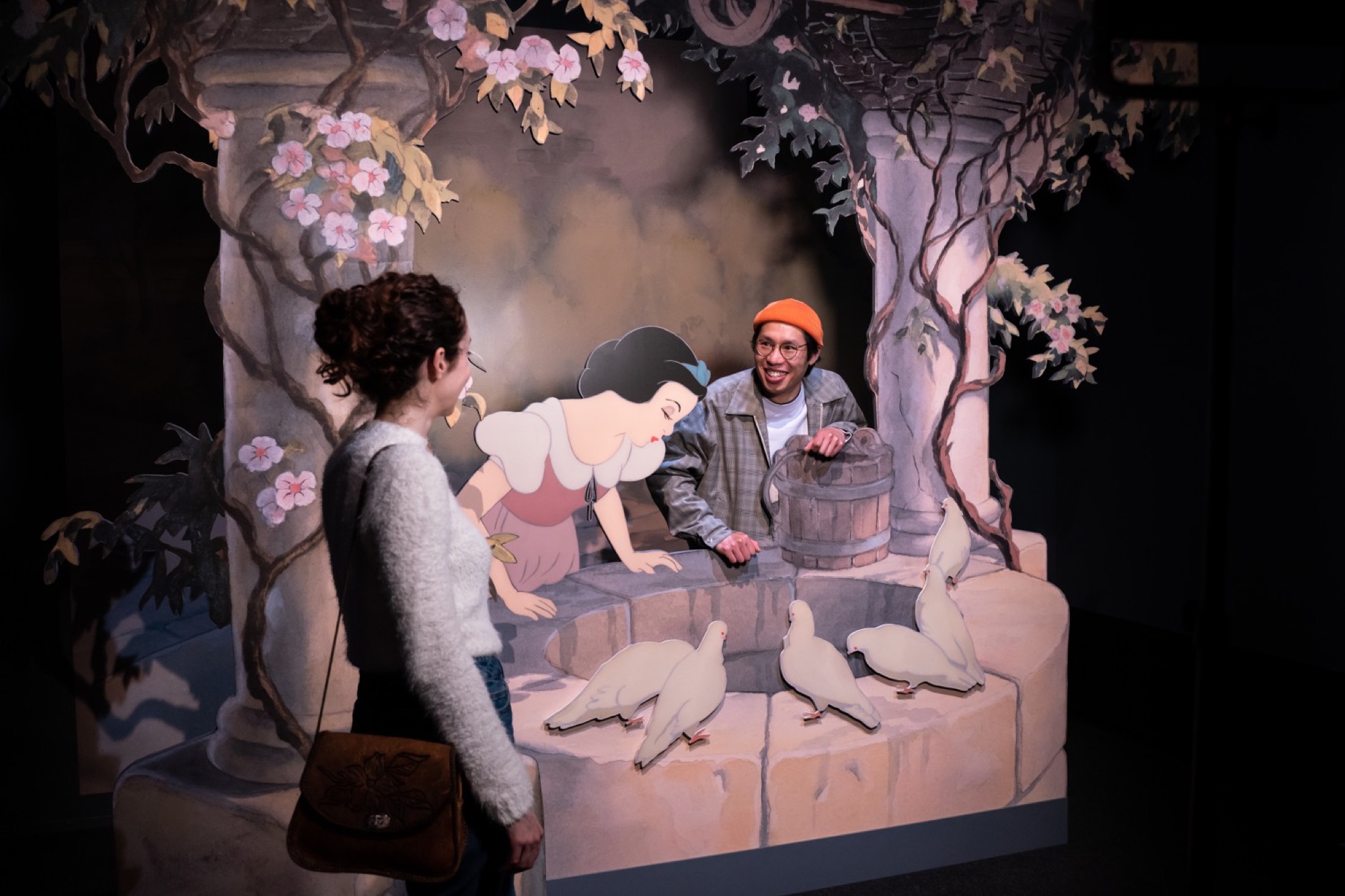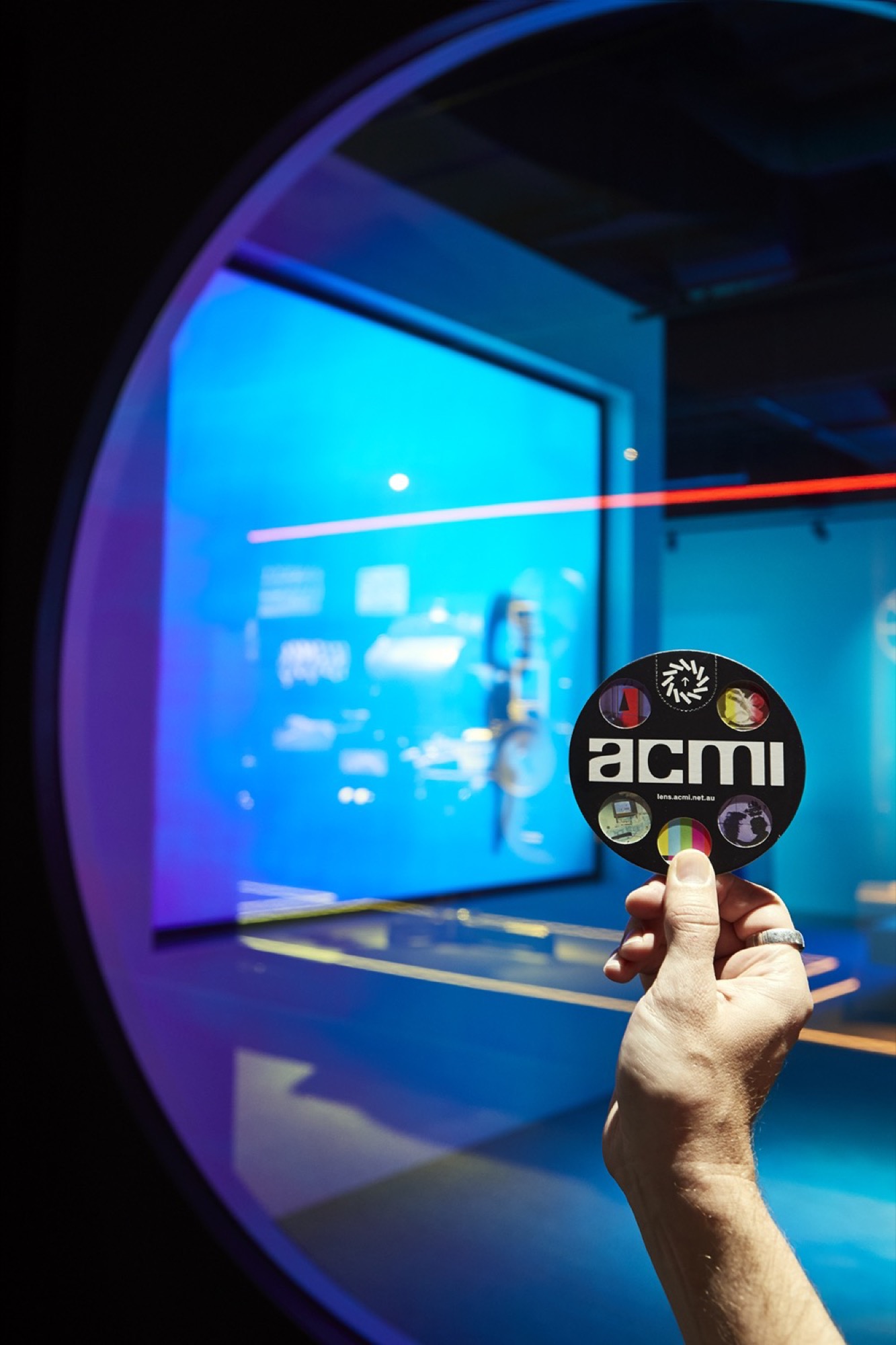Disney: The Magic of Animation
Audrey Schmidt
Melbourne is littered with bright yellow flags. They bear the recently updated ACMI logo in bold red and a selection of pre-CGI Disney sketches. The warm, happy hues of the flags with the homely faces of millennial childhoods billow in the cool Melbourne winter wind, advertising ACMI’s would-be triumphant return with a two-year and $40 million redevelopment, as well as a winter masterpieces exhibition—Disney: The Magic of Animation.
The Disney exhibit promises to show visitors how drawings are brought to life, “from pencil and paper to today’s computer-generated wonders”. To animate is to give life and from Pinocchio (1940) through to the enchanted household objects of Beauty and the Beast (1991), Disney has obsessively ruminated on the theme of animating the inanimate. Like Disney’s inclusion of the hand of the animator in Saludos Amigos (1943), after Fleischer’s Out of the Inkwell series (1918—1929), the contradiction between the magical illusion of animation and the articulation of its production is a fundamental formal characteristic of early animation. But where those films embedded questions concerning the vitality of objects and environs into the very animation (fusing and confusing objects, commodities and characters/persons), Disney: The Magic of Animation sought to explain away the magic with a few choice wall texts.
In fact, there is very little in the way of moving images at all. The would-be wonderful world of Disney has been largely reduced to stationary sketches contained in plain black frames, hung on colour-blocked walls. The Mickey Mouse zoetrope only worked from one well-lit angle and while exhibition texts promised all those family-friendly draw cards such as “immersion”, “stepping inside” a scene from Snow White and the Seven Dwarfs (1937) amounted to little other than a glorified face-in-hole board of the Great British seaside tradition. For a blockbuster, there are surprisingly few Instagram opportunities. And while it might seem odd to criticise a lack of something that is so often criticised itself in the Big Business Art World (curatorship with inbuilt organic marketing), I couldn’t help but wonder who this exhibition is for.

The revitalised ACMI is marked by its free, 1,600 square-metre permanent exhibition The Story of the Moving Image (previously Screen Worlds), which boasts all the immersion a young family could ask for. Get the kids off the iPad, out of the house and head into a huge interactive “screen cultures” exhibition. Screen-induced increases in childhood myopia during the not-quite-20/20 pandemic might make this seem like an untimely grand reopening, but at least this leg of the ACMI experience didn’t make screen culture a static experience.

On entry to The Story of the Moving Image, visitors are given a circular device to tap on various attractions called The Lens, which allows you to “take home” all the screenworks (or at least their information and stills) discovered during your stay. In Memory Garden, you could hold a home video film from The Koorie Oral History Program and the Bill Onus family archive in your hand, or at least projected onto your palm by a shiny black cylinder with the feel of a science-fiction tubular pneumatic transportation device. You could watch years of to-camera video diary performances from news and documentary through to YouTube and TikTok stars in You will see me (2020) by Sari Braithwaite, Conor Bateman and Field Carr—a work that reflects upon our tireless performance of self in moving images from the twentieth century and into the twenty-first. Another feature, Cuphead: Inspiration from the Inkwell, is a contemporary incarnation of the nineteenth-century zoetrope invention, which is inspired by Disney and the classic cartoons of the 1930s but makes for a much more enticing strobed/jacked-up attraction. Mummies and daddies can even pop into the adjoining restaurant, Hero, developed by television presenter and chef Karen Martini (of Better Homes and Gardens fame), and eat a donut with a knife and fork.

In truth, The Story of the Moving Image had all the trappings of a Disneyland pavilion, putting ACMI’s actual Disney exhibit to shame. But it is clear from the hand-drawn sketches on happy yellow flags around the city that Disney: The Magic of Animation is not for children, or they would have featured more recent releases with CGI graphics like Frozen (2013), which overtook Toy Story 3 (2010) to become the highest-grossing animated film of all time (before being overtaken again by Frozen II and the 2019 remake of The Lion King). This exhibition is for millennials. It appears on the surface as a historical retrospective, but it is rather an attempt to harness the other rampant pandemic: nostalgia.
The exhibition is comprised of works specially selected by the Walt Disney Animation Research Library in Los Angeles, California. It is therefore unsurprising that its historical approach is revisionist. Happy group photos of the Disney team, then and now, leave no trace of the company’s anti-union repression and the animators’ strike of 1941. Nothing remained of Sunflower, the minstrel centaur from The Pastoral Symphony in Fantasia. Again, unsurprising, as all releases of Fantasia since 1969 have removed the character due to her perpetuation of racist stereotypes. In fact, revisionism is a Disney speciality, going so far as to edit presidential speeches for the audio-animatronic figures in the Hall of Presidents attraction at Walt Disney World Resort. So, it goes without saying that all aspects of Disney that have historically fascinated the pop-artworld (Lichtenstein, Paul McCarthy, Banksy, Kaws and so forth), such as FBI collaboration, military propaganda and its general cultural and economic imperialism, are nowhere to be found in this otherwise neat timeline.

Characteristic of nostalgia, new banal details have been incorporated into the lacunas left by omitting the more negative episodes of history. For example, one wall text is titled “Bringing People Together: Social Diversity, Messages for Our Global Future”, and the website boasts that “the exhibition charts the Walt Disney Animation Studio’s process in continuing to tell diverse and inclusive stories for contemporary audiences”. This is all in keeping with the configuration of time in Disney mythology.
Disney’s nostalgia has always been one set in some indefinable past, beyond space and time. Dressed in the simplified language of entertainment, the refurbished past is rendered like the present, the present like the past and both are projected into a future utopia. While nostalgia is often understood as being steeped in an idealised past, and utopia a projection of a better future, there is a strong affinity between the two in their rejection of the present. As a reaction to change and an unsatisfactory present, a defining feature of nostalgia is the attempt to secure a desirable future, to set up its coordinates, by transforming or rewriting the present and the past. This is a tactic mastered by Disney and is perhaps best described by “Nhi, year 3/4” in a decal on a blue wall: “It’s cosy and really strange all at the same time.”

Nostalgia is a natural response to times of loss, uncertainty and isolation. A 2020 study tracking the effects of COVID-19 on entertainment choices in the United States reported that more than half of consumers were finding comfort by revisiting television shows and music they enjoyed in their youth. Spotify reported a fifty-four per cent rise in nostalgia-themed playlists. I even saw a TikTok where someone was nostalgic for the “OG quarantine”, and much has been written on a speculative future of nostalgia for the pandemic as a time of traditional family togetherness, board games and baking bread. If Disney is an exceedingly shrewd curatorial decision to get punters through the door, it is strangely missing its affect or emotional nexus, which is paramount to nostalgic experience. The spectacle of nostalgia is absent. There are no sing-alongs (or much music at all, despite most Disney features being musicals), and static sketches do little to evoke childhood memories of magical moving images.
Perhaps in all its absences, the exhibition instead became a giant blank screen onto which millennials were able to project their own internalised spectacle of yearning for a past that never existed and a future that never came to be. But this too missed me, even as their presumed target audience: a millennial and Disney enthusiast. Animation collectors and fans interested in production cels, original model sheets and drawings might be better served by a visit to Silver K gallery in Armadale where admission is less than half the price.
The failed or uncanny attempt to harness generational nostalgia reveals another (very un-Disney) kind of nostalgia: the exaltation of the hand-drawn, technical skill of the animator as an ideal artisanal moment before the Silicon Valley CGI Pixar explosion. This kind of nostalgia, without an embedded utopic retro-future, is not one that Disney usually deals in. Like a Magic Kingdom publication states, “Walt Disney’s realm (is) designed by scientists and inventive men of industry where time marches only toward the future”. Disney’s magic is one that incorporates its age-old contamination with technology. After all, it is one of British science fiction writer Arthur C. Clarke’s three laws that “any sufficiently advanced technology is indistinguishable from magic”. And while there are a few mounted screens playing informative videos about technological advancements (such as the procedural computer modelling tool, Tonic, that creates and styles a character’s hair using algorithms to populate individual hair follicles), this is ultimately an exhibition that extracted the magic from technology and the affect from nostalgia. And what is nostalgia without affect?

All of this would have been fine (especially considering nostalgia is often considered an escapist socio-cultural disease with fascist tendencies) if this was an exhibition geared towards children. But wall-texts, clay models behind glass and a not-quite historical, nor properly nostalgic, floorplan of “animation explained” did little to engage them. All the children appeared to be upstairs at The Story of the Moving Image, furiously tapping The Lens on everything they walked past, collecting information that is extremely unlikely to be revisited—much like the tabs open on my browser or the screenshots in my camera roll.
Disney has had an enduring impact on the development of the moving image. From the use of emergent technologies, and often “imagineering” their very development, through to influencing the actual physiognomy of TikTok stars like US Navy veteran Bella Poarch—whose childlike, nymphet facial acrobatics mirror the inhuman movements of contemporary Disney characters. But the real magic of Disney: The Magic of Animation is a disappearing act. All the fun, nostalgia, history and contemporary relevance vanished from the would-be-wonderful retro-futuristic world of Disney in favour of a very dry, revisionist retro-spective. If Disney: The Magic of Animation was trying to be for everyone, it ended up being for no one.
For more on the Disney machine, read Audrey Schmidt’s essay, “Happy Endings: Disney Accelerationism”, in SPLM, out now.
Audrey Schmidt is a writer and Melbourne Personality.


